SA Weekend: Adelaide Hills community counting the physical, social and mental cost of the devastating Cudlee Creek fire
Six months after the Cudlee Creek bushfires cut a swathe through homes, farms, businesses and livestock, the people of the Adelaide Hills are still trying to come to terms with the sense of loss, the feeling of displacement and the challenges of rebuilding.
SA Weekend
Don't miss out on the headlines from SA Weekend. Followed categories will be added to My News.
- SA Weekend Cover Story: Kangaroo Island - six months on
- After the fires: Oakbank racing legend John Glatz back at work
- BlazeAid resumes work on Hills properties after COVID-19
- Latest Advertiser +Rewards: Enter our subscriber-only competitions
In just five months, Rhiann and Marc Webb will welcome their second child. It will be a joyous occasion, of that they are sure, but it will also be an event tinged with uncertainty and frustration.
The couple, already parents to daughter Estelle, have been without a permanent home since December 20, when the Cudlee Creek bushfire ripped through their 4ha property – affectionately known as Aristaeus Farm.
For Rhiann Webb, the devastation has created a feeling of displacement for her young family which, she says, has been forced to rely on the generosity of neighbours and the wider Hills community.
This includes friend and neighbour Simon Black who has offered a temporary refuge while the family farm remains in tatters still six months after the tragedy.
“We still haven’t really come to terms with what happened. It’s not as much about the things that we lost, but the fact that there’s now a sense of instability,” Webb says.
“I feel like we lost our sense of security, a sense of belonging… and it raises the question, ‘How do we continue to live and have a routine and a structure around your family when you’re totally displaced?’”
Today, six months on from the horror blaze, there appears to be a sense of recovery filling the Adelaide Hills, including the greening of pastures, the reopening of local businesses and the return of tourists. But a closer look behind the scenes reveals a different picture.
For many residents, the aftermath of the Cudlee Creek fire is one of devastation and helplessness – a frustration exacerbated by COVID-19 restrictions.
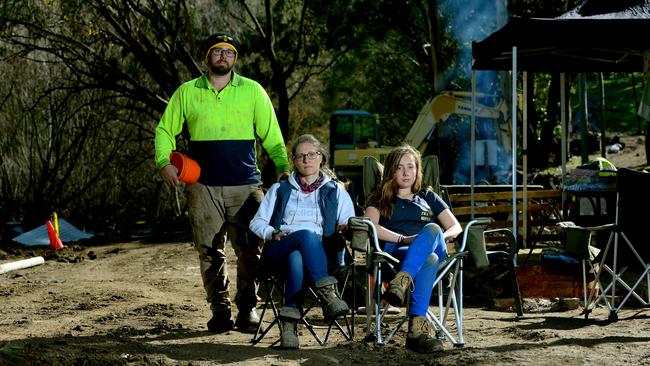
Of the 87 families to have lost a home to the fires in Woodside, Lobethal, Lenswood, Harrogate, Brukunga and Cudlee Creek, only 16 have so far applied to either the Adelaide Hills or Mount Barker District councils to rebuild. Another 70 homes were also partially damaged by the fires.
A similar trend has been recorded for the rebuild of non-residential buildings, which includes sheds, carports and businesses. Out of the 542 structures destroyed or damaged, only 130 are currently being sought to be replaced. It’s caused a question mark for community leaders, including Hills Mayor Jan-Claire Wisdom, who worries not enough has been done to help those in need.
“We only had 12 development applications coming through so far – and that’s not many, so it shows that people are having difficulties (with the process to rebuild),” she says. “Some of those difficulties may have something to do with the planning process and the way we’re processing them.
“But people are also at this real decision point – whether to stay or go elsewhere. And even if you decide to rebuild, how are you going to do that? How are you going to make it better?”
One of the fire-affected property owners currently choosing not to rebuild is the family of Ron Selth, 69, who died fighting the fires on his Charleston property – leaving behind three children and six grandchildren. His death still haunts the wider Adelaide Hills community and will be remembered as the most tragic loss from the blaze. Daughter Jasmin Berry says one of the biggest decisions for the family over the past six months was whether to keep or sell their father’s property.
“We’ve decided that we’re definitely going to keep it as we all grew up there – but my sister does find the decision a bit difficult because that’s where dad died,” Berry says.
“We’ve had the house block cleared now and that’s been super helpful. Before that, we had only been out there twice after it happened because it was too horrendous to go out there.
“Now, when we do go, we visit a little cottage that dad built on the property and which survived the fire. It’s made of stone and located in a beautiful little spot and we find that, when we go up now, that’s where we tend to go because it reminds us of him.”
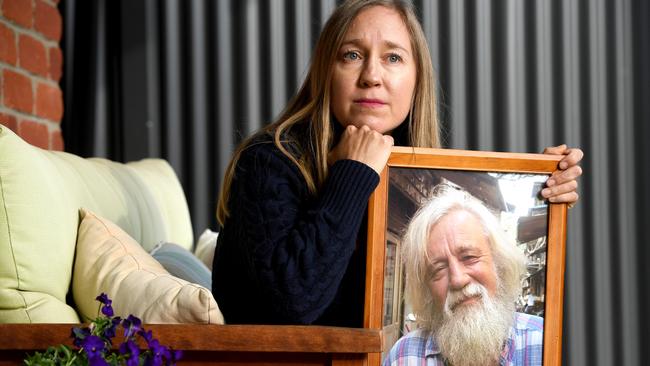
Lenswood local Shayne Boyle almost became the fire’s second victim. The father of three young girls was running for his life in the middle of the inferno when a passing CFS crew miraculously pulled him to safety.
“We were up (at the top of vineyard) trying to stop the fires at a neighbour’s place when the fire, all of sudden, just came on top of us. It just moved so quickly,” Boyle says.
“I was stuck on a tractor and tried to drive out of it but got stuck on a log. So as soon as I could, I got off and ran through the fire to get away, down to the main road where I walked till the CFS came to pick me up.”
Boyle spent the next three-and-a-half weeks in hospital.
Doctors said 33 per cent of his body had been burned – including both legs and arms. But, despite the pain, he pulled through “like a trooper” according to wife Jess who, Boyle says, has been his biggest support.
He’s now returned to work as a mechanic in a Longhorne Creek winery, but wears compression sleeves over his legs and arms.
“The worst part was when they did the skin graft. That’s what hurt the most,” he says.
“But I am pain-free now, even though I still have to wear compression socks to prevent swelling. It’s something I’ll have to wear till the end of the year, but I should have them off by Christmas.”
Boyle says he is recovering well physically but his mental health is another matter.
“With the next fire season just around the corner, I do think that there’s a level of anxiety now building up,” he says.
“Because of where we are, we didn’t get burned, we’re still untouched and vulnerable. So if there’s a fire, it’ll hit us and that’s playing on my mind.”
For Jess Boyle, seeing her husband narrowly escape death has been life-changing. “I do think this fire has made us more prepared,” she says.
“In fact, the first thing Shayne did when he got home from hospital was get all the insurance and firefighting gear ready for the next season. It was certainly a way that he healed, by getting ready and being prepared for next time because it’s inevitable that there will be another fire at Lenswood, because it’s so heavily wooded.”
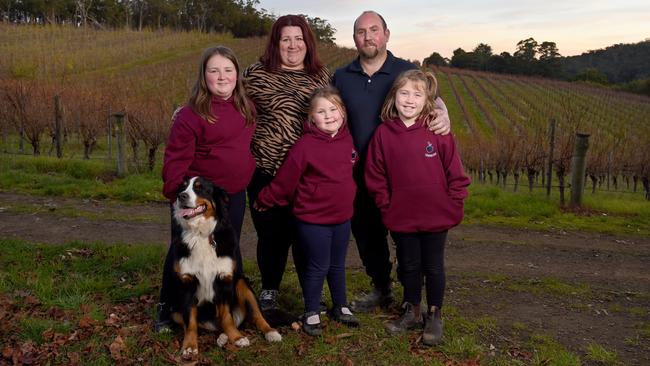
Just a minute down the road, Jess’s father Kym Green is still counting his blessings after he saved his family home. Unfortunately two-thirds of his apple orchard did not fare as well and he’s still in the process of removing about 10,500 damaged trees and fencing.
“At the moment I feel like I have done all that I can and, to be honest, there are some days where I have a gutful of it,” he says.
“It’s a thankless task when you’re dealing with the dead all the time and I try hard to live in the present to keep the morale up.
“While I had the odd help now and then, it’s really now back to us having to do it all, because of this whole COVID dilemma. Any help that we were getting after the fire, it’s currently gone, so we’re back to being on our own. So that virus has definitely caused a flip in how recovery has been handled up here.
“Before, in the months after the fires, people were very generous, focusing on the burned and the community and volunteer support has been fantastic. But now, because of COVID, everyone has retreated into themselves and that’s disappointing.”
Cudlee Creek bushfire recovery co-ordinator Alex Zimmermann says COVID-19 had been undoubtedly the biggest setback for communities. He says the Hills were only just emerging from the bushfires when the coronavirus struck.
The State Government has distributed nearly $10 million for Hills residents hit by the bushfires: personal hardship grants, 2148 payments totalling $1.25 million; small business loss of income grants, 106 payments totalling $1.06 million; small business rebuilding grants, 39 payments totalling $1.26m; primary producer grants, 94 payments totalling $5.99m. A further 982 payments, totalling $3.25 million, have been delivered to the Hills through the SA Bushfire Appeal.
“Even now, six months on, visitation numbers to the Lobethal Recovery Centre are still around 70 a week,” Zimmermann says.
“We have four dedicated case managers and they, together, still manage a caseload of about 200. What’s happened is that COVID has been good and bad. The good comes from that the focus has been on different things... and the respite has done them a world of good but the unfortunate thing is that now, many are probably a few months behind where they should be with their recovery.
“With that realisation comes some emotional highs and lows because they are now again confronted by huge challenges, such as having to rebuild their homes.”
Besides financial aid, helping residents with their mental health has been a major priority. This includes identifying property owners who may be triggered by the anniversary of the event and the fact the next bushfire season is only five months away.
“We know that, in the blink of an eye, we will be in the next bushfire season – all while people are still trying to recover from the last one,” Zimmermann says.
“So we need to be vigilant within our community and to make sure they know we’re here for them.”
Another avenue Hills landowners are being urged to capitalise on are recent changes to Australia’s working visa. Backpackers helping with the recovery efforts have, since March, been able to extend their maximum working arrangements from six to 12 months at any property affected by fires. They are also able to have their volunteer work reclassified as “specific work”, a required aspect when applying to extend their visas into a second or third year.
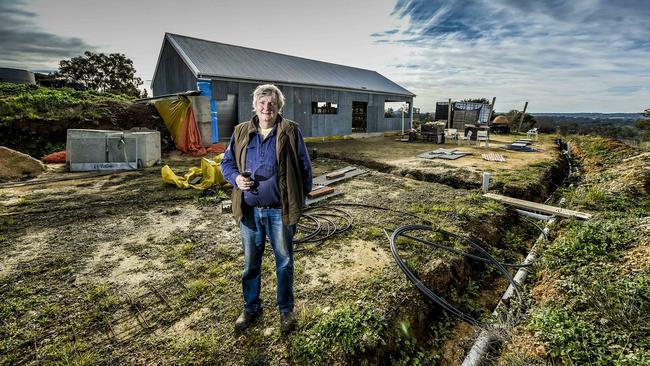
While many have welcomed the Federal Government initiative, uptake has been slow, partially due to a lack of available backpacker accommodation in the Hills.
Zimmermann says he is looking at alternative ways to bring volunteers back to the region, including providing a shuttle service to allow backpackers to work in the Hills while retaining their accommodation in the city.
“What I’m trying to do at the moment is to work with brokers who assist backpackers find employment with growers, to see what sort of issues they have with getting workers up into the area,” he says.
The return of more volunteers can’t come fast enough for Lobethal businessman James Tilbrook. The veteran winemaker lost 70 per cent of his vines to the fire, as well as Tilbrook Estates cellar door, resulting in $300,000 worth of wine being destroyed.
In the weeks that followed, about 200 volunteers helped remove destroyed vines and fencing from the property – work, Tilbrook says, that has been vital for both vineyard operations and his own personal mental wellbeing.
“Since the fires, every day seems to be much the same. I haven’t had a day off and had to go on medication to deal with the stress and anxiety. So, because of that, it all feels a bit dreamlike,” he says.
“I actually feel that side of things, mental health, we need to speak about that more because there’s a lot of us that are feeling this way. Just the other day, I had the excavator out because some of the demolition people took away some stuff.
“When I went down the back paddock… there was this smell, the same smell that was there just after the fires. This earthy, sickly weed smell. Slightly chemical. I fobbed it off when it first hit me but when I got just below the dam, my limbs were shaking. So while consciously I went ‘whatever’, subconsciously, I’m not OK.” But thanks to the generosity of the Hills community, all hope is not lost. When neighbours heard about Tilbrook’s plight, the estate attracted a large donation of wines from other wineries, which helped the vineyard launch its new label – Hope.
“The donation really helped keep us going and made sure it wasn’t the end of the world as it were,” he says. “We got a special dispensation ... to put our label on somebody else’s wine which we hadn’t produced, and that’s for 12 months with the option to extend it for another 12 months.
“So we’re currently aiming at keeping the Hope label going for potentially two years. It’s allowing us to sell it a lot cheaper, which means we can get back into wholesale and make sure there’s some money coming in.”
Beef farmer Tom Hampton is also looking ahead to better days. About 90 per cent of his 42ha property in Harrogate was burned in the fire, leaving him without 3km of fencing and much-needed feed for his pasture-fed cattle.
“Our biggest financial loss was all the pasture that was burned out and having to replace that with hay,” he says.
“A lot of grass has since grown back but it’s still not enough. In fact, a lot of it is weed, so we’ve been going through a lot of hay and will for some time to come.
“For the past six months, I’d say we’ve put out an extra 100 rolls of hay – so that’s at least an extra $10,000 we had to pay on top of everything else. But I don’t want to complain. I think overall the cattle industry was lucky – that’s if you didn’t lose any animals – but even then I think the wine industry copped the worst of it.”
Despite the fear, uncertainty and loss, community resilience and generosity over the past six months has never been greater – from the Country Fire Service personnel who put their lives on the line during the emergency, to the BlazeAid volunteers who resumed work last month to continue their fencing work across more than 200 properties.
Hills locals also launched a statewide food drive, delivering more than 7000 home-cooked meals to hundreds of fire-affected families in the first three months.
For those hit the hardest, a lifeline has also come in the delivery and installation of temporary homes, which were supplied by the Minderoo Foundation. Around 100 recovery pods have so far been manufactured by Australian Portable Camps in Monarto for fire victims across NSW and SA.
Marc Webb, whose family is one of the latest recipients of a recovery pod, says the donation has been the lifeline they had so desperately needed.
For the past six months, he and his family have been living in a one-bedroom cottage on neighbour Simon Black’s property which, in itself, has a created a number of challenges, including where to store most of their donated belongings.
Their daughter Estelle has been living in the property’s main residence due to space limitations. Webb says the pod now gives them a place to come together when working on their own farm.
The 7.2m x 2.4m units are fully self-contained and come with a 2300-litre water tank. They can operate on the included 5 KVA generator or use a 15-amp external plug-and-play mains connection. Internally they have a toilet, shower and small open kitchen with a two-burner stove.
“A lot of people ask us how long till the house is built and what about the baby?” he says. “To be honest, I can’t tell you that. But what I can tell you is that it will take two days to burn a bonfire, it’s going to take me four days to drag that item over there and then do this and that – that’s if we get onto it. So I can’t tell people when the house will be finished because we have all of these things to do beforehand.
“It’s great to have the pod for now. In fact, it’s the first time since the fires that we have had any facilities here and we can actually cook a meal inside for once.”
While the pod may have brought some home comforts and routine back to the Webb family, they’ve a long way to go until their daily experience could be considered a “return to normal”.
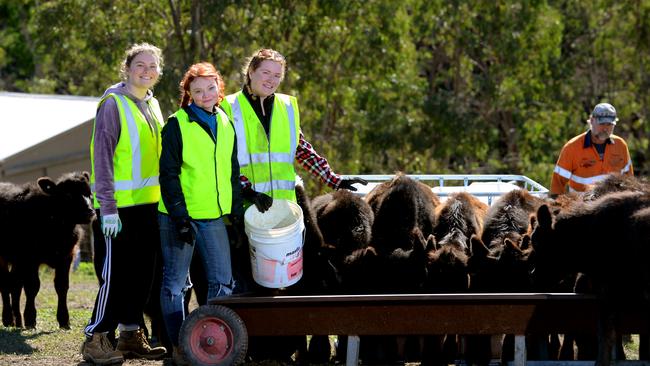
For Black, the Cudlee Creek aftermath has been about mateship and helping those less fortunate than him. This included running teams for BlazeAid until March, and storing hay and equipment for other fire-affected property owners.
He has also been instrumental in pushing for the return of backpackers to the region, which has led to a close partnership with Zimmermann.
“I have three backpackers up here at the moment, one of which has been coming up from Glenelg but has now started staying in Marc’s pod, while he and his family are staying with me,” Black says.
“So we’re pretty knackered in terms of space and really need more people to offer up rooms to help us and backpackers keep their visas. I know Tilbrook is also currently working on finding some suitable accommodation for these kids to get that workforce back up here, so hopefully we can get something worked out in the next couple of weeks.”
Mayor Jen-Claire Wisdom says the community has demonstrated commendable strength of spirit and comradeship in supporting each other through the bushfire recovery. But she says it will take combined support and enabling strategies from local and state governments to ensure rebuilding is smooth and efficient.
If either of these bushfire recovery stories has raised mental health concerns, please call Lifeline on 131 114, Beyond Blue on 1300 224 636 or the SA Bushfire Recovery hotline on 1800 302 787
